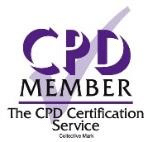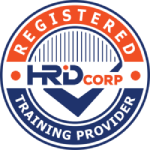About this Virtual Instructor Led Training (VILT)
This VILT will provide a comprehensive understanding of the various types of mechanical seals and other methods of sealing rotating equipment including conventional packing, condensate injection sealing, and floating seal rings. This course will focus on mechanical seals including their classification, balanced and unbalanced mechanical seals, stationary and rotating mechanical seals, single or double mechanical seals, industrial mechanical seals, U-type mechanical seals, double mechanical seals, tandem mechanical seals, bellows seals, and installation of mechanical seals.
This course will also provide detailed description about the installation of mechanical seals, pre-installation checks, environmental control of mechanical seals, and the reasons for mechanical seal failure, remedies and refurbishment.
- Various Methods of Sealing Rotating Equipment: Gain a thorough understanding of the various methods of sealing rotating equipment including stuffing box packing, condensate injection sealing, floating seal rings, labyrinth seals, wind back scroll or wind back seal, lip seals and mechanical seals
- Mechanical Seal Classification and Types: Understand thoroughly mechanical seals classification and types including balanced and unbalanced mechanical seals, stationary and rotating mechanical seals, single or double mechanical seals, industrial mechanical seals, U-type mechanical seals, double mechanical seals, tandem mechanical seals, and bellows seals
- Installation of Mechanical Seals: Learn about the installation of various types of mechanical seals
- Environmental Control of Mechanical Seals: Gain a good understanding of the reasons for environmental control of mechanical seals
- Centrifugal Pump Mechanical Seals: Learn about centrifugal pump mechanical seals including basic components, seal balance, face pressure, pressure-velocity, power consumption and temperature control
- Mechanical Seal Failure Causes and Their Remedies: Examine all the causes of mechanical seal failures and their remedies
- On-Site Failure Analysis of Mechanical Seals: Gain a thorough understanding on how to perform an on-site failure analysis of mechanical seals
- Inspection of Mechanical Seal Components: Learn how to perform inspection of mechanical seal components
- Corrosion and Erosion of Mechanical Seal Components: Examine the description, symptoms, causes, and corrective actions of corrosion and erosion of mechanical seal components
- Mechanical Seal O-ring Compression Set, Extrusion, Thermal Damage, Cuts, Tears, Nicks, and Explosive Decompression: Understand the description, symptoms, causes and corrective actions of o-ring compression set, extrusion, thermal damage, cuts, nicks, and explosive decompression
- Mechanical Seal Rotating and Stationary Face Distortion, Erosion, Carbon Blistering, Heat Checking and Vaporization: Understand the description, symptoms, causes and corrective Actions of mechanical seal rotating and stationary face distortion, erosion, carbon blistering, heat checking and vaporization
- Refurbishment of Mechanical Seals: Gain a thorough understanding of all the modern refurbishment methods of mechanical seals
- Case Studies of Mechanical Seals in Pumps and Compressors in power generation and Petro-Chemical industry: Several case studies of mechanical seals in compressor and pumps will be explained thoroughly
- Engineers of all disciplines
- Managers
- Technicians
- Maintenance personnel
- Other technical individuals
Your specialist course leader has more than 32 years of practical engineering experience with Ontario Power Generation (OPG), one of the largest electric utility in North America. He was previously involved in research on power generation equipment with Atomic Energy of Canada Limited at their Chalk River and Whiteshell Nuclear Research Laboratories.
While working at OPG, he acted as a Training Manager, Engineering Supervisor, System Responsible Engineer and Design Engineer. During the period of time, he worked as a Field Engineer and Design Engineer, he was responsible for the operation, maintenance, diagnostics, and testing of gas turbines, steam turbines, generators, motors, transformers, inverters, valves, pumps, compressors, instrumentation and control systems. Further, his responsibilities included designing, engineering, diagnosing equipment problems and recommending solutions to repair deficiencies and improve system performance, supervising engineers, setting up preventive maintenance programs, writing Operating and Design Manuals, and commissioning new equipment.
Later, he worked as the manager of a section dedicated to providing training for the staff at the power stations. The training provided by him covered in detail the various equipment and systems used in power stations.
In addition, he has taught courses and seminars to more than four thousand working engineers and professionals around the world, specifically Europe and North America. He has been consistently ranked as “Excellent” or “Very Good” by the delegates who attended his seminars and lectures.
He written 5 books for working engineers from which 3 have been published by McGraw-Hill, New York. Below is a list of the books authored by him;
- Power Generation Handbook: Gas Turbines, Steam Power Plants, Co-generation, and Combined Cycles, second edition, (800 pages), McGraw-Hill, New York, October 2011.
- Electrical Equipment Handbook (600 pages), McGraw-Hill, New York, March 2003.
- Power Plant Equipment Operation and Maintenance Guide (800 pages), McGraw-Hill, New York, January 2012.
- Industrial Instrumentation and Modern Control Systems (400 pages), Custom Publishing, University of Toronto, University of Toronto Custom Publishing (1999).
- Industrial Equipment (600 pages), Custom Publishing, University of Toronto, University of Toronto, University of Toronto Custom Publishing (1999).
Furthermore, he has received the following awards:
- The first “Excellence in Teaching” award offered by PowerEdge, Singapore, in December 2016
- The first “Excellence in Teaching” award offered by the Professional Development Center at University of Toronto (May, 1996).
- The “Excellence in Teaching Award” in April 2007 offered by TUV Akademie (TUV Akademie is one of the largest Professional Development centre in world, it is based in Germany and the United Arab Emirates, and provides engineering training to engineers and managers across Europe and the Middle East).
- Awarded graduation “With Distinction” from Dalhousie University when completed Bachelor of Engineering degree (1983).
Lastly, he was awarded his Bachelor of Engineering Degree “with distinction” from Dalhousie University, Halifax, Nova Scotia, Canada. He also received a Master of Applied Science in Engineering (M.A.Sc.) from the University of Ottawa, Canada. He is also a member of the Association of Professional Engineers in the province of Ontario, Canada.
Unlock the potential of your workforce with customized in-house training programs designed specifically for the energy sector. Our tailored, in-house courses not only enhance employee skills and engagement but also offer significant cost savings by eliminating travel expenses. Invest in your team’s success and achieve specific outcomes aligned with your organization’s goals through our expert training solutions. Request for further information regarding our on-site or in-house training opportunities.
In our ongoing commitment to sustainability and environmental responsibility, we will no longer providing hard copy training materials. Instead, all training content and resources will be delivered in digital format. Inspired by the oil and energy industry’s best practices, we are leveraging on digital technologies to reduce waste, lower our carbon emissions, ensuring our training content is always up-to-date and accessible. Click here to learn more.
To further optimise your learning experience from our courses, we also offer individualized “One to One” coaching support for 2 hours post training. We can help improve your competence in your chosen area of interest, based on your learning needs and available hours. This is a great opportunity to improve your capability and confidence in a particular area of expertise. It will be delivered over a secure video conference call by one of our senior trainers. They will work with you to create a tailor-made coaching program that will help you achieve your goals faster.
Request for further information about post training coaching support and fees applicable for this.
Learn what past participants have said about EnergyEdge training courses
The training course was excellent and trainer was outstanding
Assistant Foreman Maintenance, MOL Pakistan Oil and Gas Co. BV
Excellent training! Like the videos and materials of training course



